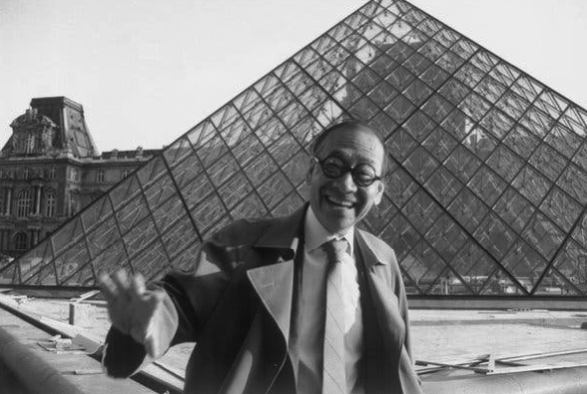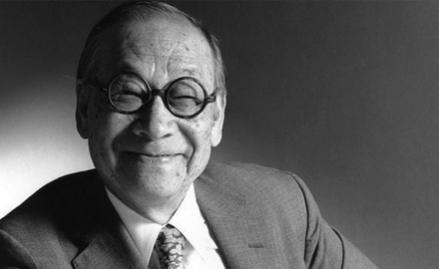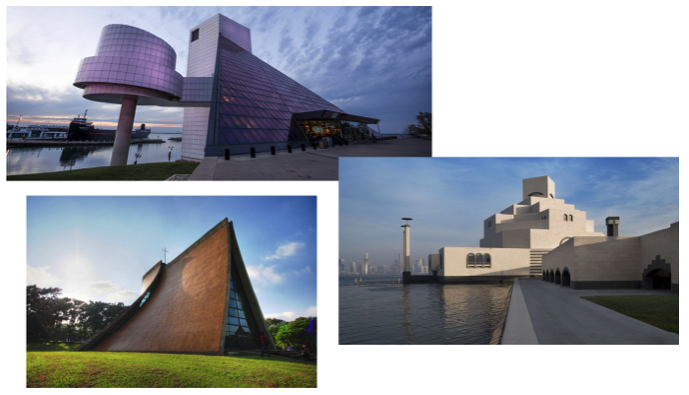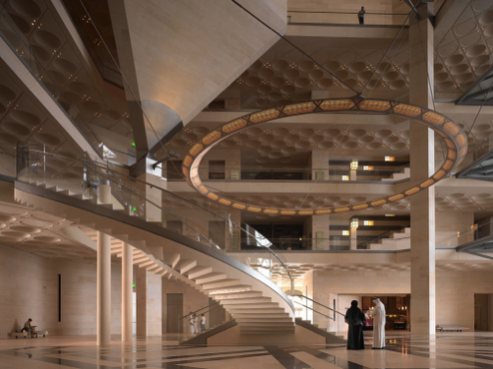Some of the most famous and Intagrammable places in the world are architectural designs. Those beautiful buildings have been designed by the extraordinary minds and hands of the architects around the world. One of those architects, that has left us back in May 2019 is I.M.Pei. Maybe unknown for many, this man most famous architectural legacy is nothing other but the glass pyramid standing in front of the Louvre museum in Paris. Impressive, right?
I.M.Pei, full name Ieoh Ming Pei (pronounced pay) was born on April 26, 1917, in Guangzhou, China. Not much is known about his early life until he decided to come to the USA when he was 17 years old and to study at the University of Pennsylvania in Philadelphia. Although that was his first and original ides, he later transferred to the Massachusetts Institute of Technology which proved to be the right move and there earned his bachelor degree in architecture in 1940. After earning his degree, Pei continued his studies at the Harvard University’s Graduate School of design. It was the place and the opportunity he came across to meet and study with Walter Gropius. He was a German architect, the founder of the Bauhaus design movement – a moment in the modern architecture that defined the decorative elements in the way that “form follows function”, something that is present to this very day. Like many great minds, Pei took a break from studying too, and that was in the period of World War II when he worked for the National Defense Research Committee. Returning to school in 1944 was again the right move, and in 1946, Pei got his masters degree in architecture. This was the time when he also started working as an assistant professor at the university. With this impressive education background, and living in America, the doors to a Pei’s successful career were wide open.
Looking to broaden his horizons and dive deeper into the architecture, in 1948 Pei started working for an architectural company named Webb & Knapp, Inc. They were based in New York and his colorful resume brought him to the position of director of architecture. Pei was working there until 1955 when he decided it is time to leave and start something of his own. He founded the firm I.M. Pei & Associates that is today known as Pei Cobb Freed & Partners. With his new firm, came the first big projects that were major for the time – Mile High Center in Denver, Colorado. While working on this project, Pei was also doing consulting on several plans for urban renovations in Washington, Boston, and Philadelphia. His talent was soon heard in the higher levels of the society which brought the project of designing a presidential library for then, the late President John F. Kennedy, which was finished in 1979. Later came the projects of creating the east wing of the National Gallery of Art and the Dallas City Hall in 1978, Mesa Laboratory of the National Center for Atmospheric Research in Colorado, the west wing of the Museum of Fine arts in Boston in 1980, Fragrant Hill Hotel in China in 1983.
One of the most famous Pei works is the revitalization of the Paris’ Louvre museum. Although he did not accept the invitation at first, Pei decided to do something unique to revive its look and it proved to be a world-class move. The large glass pyramid that today stands in front of the entrance of the museum became Pei’s signature representation of the work.
Pei’s work did not stop here. Just on the contrary, his business was booming. He became the most sought-after architect attractive to real estate developers, corporate and art museum boards. During the 1990s and 2000s, Pei designed other impressive buildings like United States Holocaust Memorial Museum in Washington, the Nascar Hall of Fame and the Rock & Roll Hall of Fame in Cleveland, Museum of Islamic Art and many more.
From the moment Pei appeared on the architectural scene, he caught the eye of many cultural, governmental and commercial companies who wanted his input in their projects. This was all due to his talent and ability to interconnect the sharp geometrical lines with the current regional architectural traditions which always resulted in a magnificent design. Thinking outside the box at the time when Pei started working and designing a variety of buildings from skyscrapers to museums, represented the perfect balance in his creativity and open mind how to carefully work within the lines of the cutting edge and conservative.
His style can be best explained as modern. He loved designing projects with clean and sharp-edged lines, combining the simple geometry with the latest trends. Although many at that time might have taken his work and approach with the dose of reservation, Pei was strong and determined in his work. In the end, his creations did pass the test of time, today being considered as the best and most beautiful architectural designs in history.
On May 19th, 2019, his son Sandi, also an architect working at his father’s company announced that the great mastermind and brilliant architect passed on the age of 102. He lived a great and fulfilled life. Born in China but living in America has made Pei appreciative of every culture and tradition which was only a plus in his creative work and building a rich architectural profile and profession.
—-Maja Krdzic




